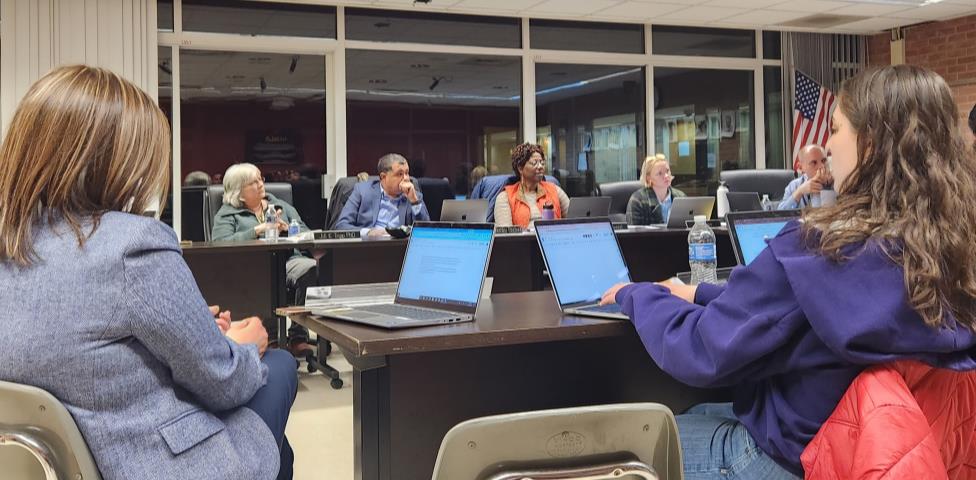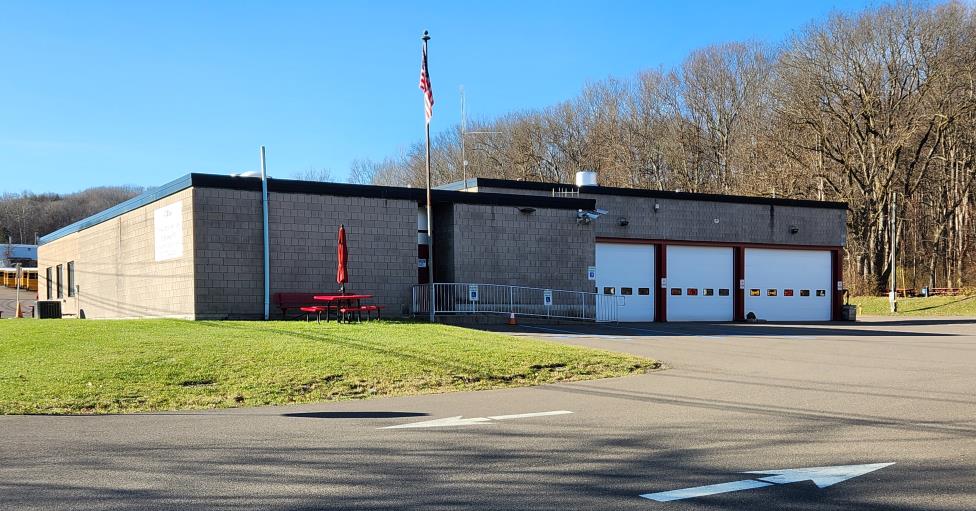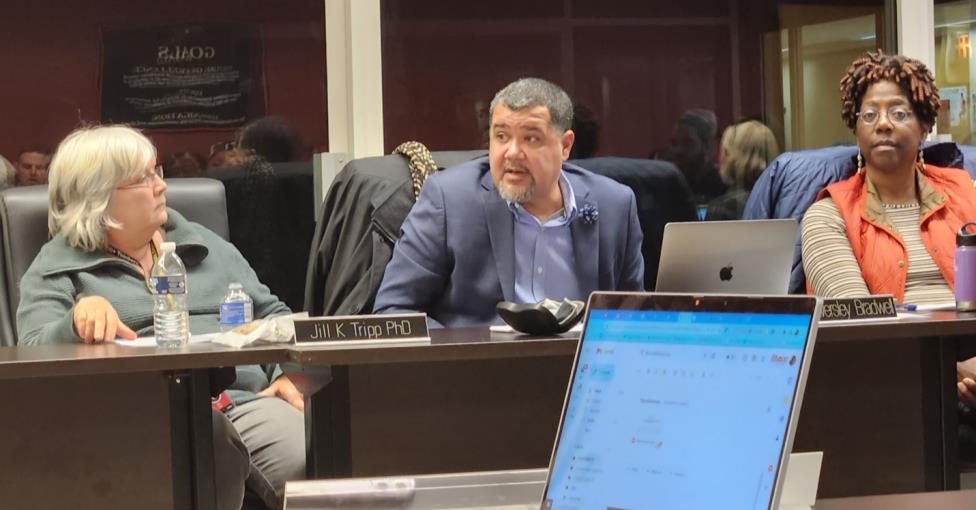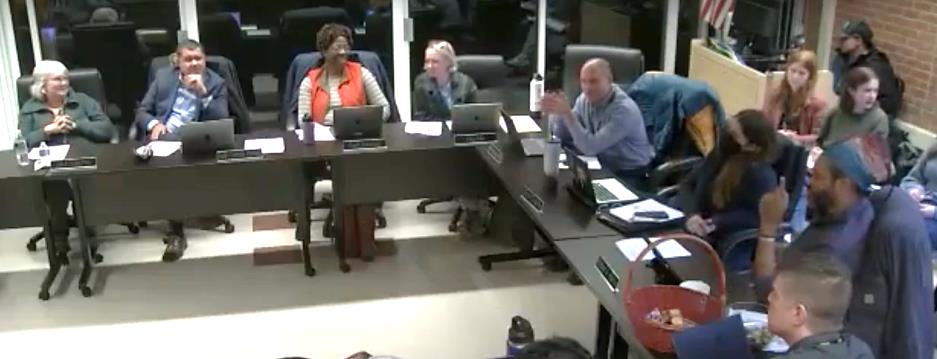ICSD’s Fungible Funding and our Taxpayer Choices
by Robert Lynch; December 17, 2023
Update (Dec. 19): The Ithaca Board of Education, by a vote of 8-1 Tuesday, Dec. 19th, approved putting to voters the proposed “District-Wide Capital Improvement Project” totaling $125 Million, the most costly of the three options earlier placed before it. By so doing , the Board never considered or took a vote on two less-expensive $40 Million or $98 Million alternative spending plans. Board discussion of the funding choices prior to the vote proved minimal, members relying on what they’d stated at prior sessions. School Board member Jill Tripp cast the only dissent, Tripp declining to elaborate on her vote during the public session.
Expect more to be written on this story.
****
As the Ithaca Board of Education left things at its December 12th meeting, members and administrators were to hammer out a compromise capital funding package, one reaching somewhere in the tens of millions of dollars, at a Facilities Committee meeting two days later. It didn’t happen. The meeting was canceled.

Therefore, expect the School Board to debate and likely to decide this Tuesday (Dec. 19th) whether to ask voters next spring to spend $40 Million, $98 Million, $125 Million—or maybe something in between—toward upgrading its facilities to a new, temperamental electrified bus fleet; while also building a new bus garage, and potentially spending tens of millions of dollars more on a wide variety of other capital projects yet to be nailed down.
Yet although there was no public meeting between the last one and the next, someone in the meantime fiddled with the numbers. Before Board members back on December 12th were three different choices; options of $15 Million, $40 Million, and $125 Million. No one has explained on the Ithaca School District’s website how the totals got changed, when, or by whom.
Last Tuesday’s hour-long discussion of the capital options saw no Board votes taken, nor even any clear consensus given among members. But taken in its totality, the discussion that night conveyed a sense that the amounts to be asked of voters next May don’t really matter all that much.
It’s all in the timing. It’s a matter of whether you ask voters to take capital spending in one big gulp or in smaller capital bites. Without a taxpayer backlash that in Ithaca never seems to happen, the money will likely still get spent.
“This is part of an ongoing conversation; part of a long-term planning process engaging discussion and dialogue,” School Board President Dr. Sean Eversley Bradwell broached the subject of capital funding at Tuesday’s meeting.
To some it may seem appropriate abstraction. But to others—to those who never seem to come to school board meetings or vote in school elections—the matter becomes far more concrete: How much must my tax bill go up to pay for an unsettling homogenization of public school “needs,” and “wants” that never seems to get segregated?
On the December 19th School Board agenda stand three distinct, yet nearly-identical Resolutions. Stripped of their dense language that misleadingly pigeonholes them as some sort of environmental action, the competing proposals would schedule for public referendum a “proposed District-Wide Capital Improvement Project” of alternately $40 Million, $98 Million or $125 Million.
Each resolution says the specified amounts “shall be used in connecteion (sic) with the engineering, economic and feasibility studies together with preliminary planning and budgetary processes” for projects nowhere specified. [Yes, in case you’re curious, “connection” was misspelled in all three resolution drafts. Maybe someone in the School District or at its top-shelf Syracuse law firm should attend spelling classes at Enfield Elementary.]
Since the previous low-price option ($15 Million) has now been tossed away, safely assume Board members have now agreed, albeit informally, to demolish the District’s current Bostwick Road Transportation Facility and replace it with a new building. The $40 Million option sets the bus garage’s replacement as Priority One. The now-discarded $15 Million alternative would have stopped short of replacing it.

“It’s a matter of how often we are going to the voters to get authorization,” School District Chief Operating Officer Amanda Verba candidly informed the Board of Education that night. “The same amount of work is going to get done.”
In effect, no one at last Tuesday’s meeting; not Board Members, nor administrators; talked of cutting capital projects out of the ICSD’s wish lists of wants and/or needs. It’s just that some, like Board member Jill Tripp, support taking the smaller bite approach.
“There’s a gap between Option B and Option C (then $40 Million and $125 Million),” Tripp said. “Why don’t we have (the Transportation Facility) and $9 Million a year?” she offered. “We’d probably be coming back in three or four years anyway.” Coming back, that is, with another capital package.
Each of the current capital options specifies a supposed ten-year lifespan. Packaging a $40 Million bus garage and $9 Million over each of maybe five years would reach $85 Million. Under Tripp’s reasoning, the longer the term, the bigger the total. The same number gets reached, just not with such a jolt.
“The voters in the District have been incredibly supportive of the schools, and I don’t anticipate that changing,” Tripp observed. For Ithaca, it’s an apt observation. Yet keep in mind that only a trickle of Ithacans generally turn out for a May Ithaca School District election. And anecdotal evidence suggests that many of those voters who do turn out are either teachers or parents.

“Should we look at this as an opportunity to also incorporate other needs, concerns, challenges that we’re facing with infrastructure, with our campuses, with our buildings, and what would that threshold be?” Verba posed to the community and to the Board as she advanced the argument that favors the larger capital request.
The financial officer stressed the pay-as-you-go nature of capital upgrades, emphasizing that even though authorized by the electorate, a project doesn’t get bonded or the money spent until it’s ready to be built.
“As we go, we’ll need 14 Million for this piece, or $16 Million for this piece, or $22 Million for this piece, and we would put that over the course of time,” Verba explained. She noted that slices of the District’s last mammoth capital authorization, $120 Million, approved in 2019, have yet to be spent.
“The way in which the money is spent is very specified,” Board President Bradwell stressed.
“You’d bond for funds as you’d need it,” Verba emphasized.
Yet when voters are asked to decide how much to spend next spring, they’d lack the specificity that Bradwell and Verba say bonding attorneys and Albany’s regulators require. The process leaves wide room for School Board and school administrative discretion.
And what happens if there’s an emergency, Board members asked. What if you authorize only $40 Million, with all of the money earmarked for the bus garage, but you need it for a roof instead, Adam Krantweiss questioned. What if a roof collapses?, Bradwell raised as a hypothetical.
Verba answered that one could still move money around, not upgrade the garage, “roll the dice,” not meet New York State’s mandate for the electrification of buses, and see how Albany responds.
Indeed, the bus electrification mandate looms large over the capital options considered by the Board. Verba said New York will ban the purchase of anything but electric-powered school buses in 2027 and mandate an entire electric fleet by 2035. The original $15 Million base authorization would have upgraded the existing transportation facility to charge and service the electric buses. But the $25 Million add-on—now obviously favored— would also replace a garage built 56 years ago, one that many say is too small and ill-equipped to handle the electric vehicles.
“We need to get the electrification of Bostwick Road in order,” Verba told the Board. She indicated that a grant could come through as soon as January to fund 15 additional electric buses. The first five of such units were delivered to Ithaca’s district last summer.
But other voices were heard in the room that night. And the people behind those voices were doing the math. Board member Erin Croyle subtracted $40 Million from $125 Million. That leaves, she said, $85 Million spread out over as long as a decade to fix problems apart from transportation. $8.5 Million annually; “which is kind of what we need to keep the buildings going,” Croyle cautioned.
“Up to $8.5 Million,” Dr. Bradwell cut in. “There’s nothing that demands we have to spend the entirety of that.”
But available money always finds a place to be spent. Board members rattled off structural senility throughout their district. Belle Sherman Elementary, they noted, was built a century ago, in 1922; Beverly J. Martin Elementary constructed in the 1930’s. “It was built as a Middle School,” member Eldred Harris reminded colleagues of BJM Elementary, “We have patched that sucker up,” a frustrated Harris chuckled.

The capital spending issue begged for a vote that night. But all were willing to put the matter on the shelf for a week. And while most members held back a specific preference, Karen Yearwood, as during the Board’s previous session in November, expressed preference for the $125 Million option. And if one chose to read the room that night, one would conclude that more than just the bus garage will find itself tucked into any capital cornucopia handed up for final School Board approval Tuesday.
And sadly, before the School Board takes its vote Tuesday night, no one from the public will likely speak. No one will pay attention before this potential nine-figure spending proposition suddenly shows up on the Ithaca School District ballot next May. For that matter, few may even notice come then.
###

